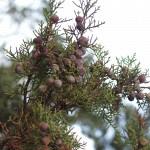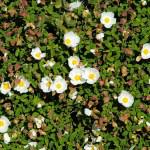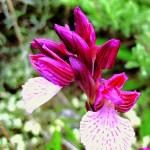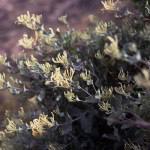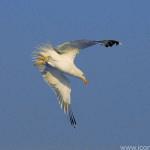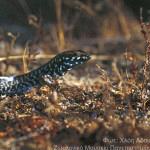The natural wealth of Milos
Milos Flora
Wood plants
The biggest native species on the island of Milos is the Italian cypress (Cupressus sempervirens). In the past, this must have been widely spread throughout the island. However, continuous logging and land clearing in order to create farms and grazing lands, has restricted its presence in a gully, where it still forms beautiful stands of trees, up to 20 m. high, with a remarkable regeneration.
Other conifer species include the Phoenicean juniper (Juniperus phoenicea) and the Juniperus macrocarpa appearing in the form of shrubs or small trees up to 10, and rarely 12 m. high. At many sites, they form dense clamps.
Large populations of all the above-mentioned arboraceous species are found in western, central and southern Milos, while smaller populations grow in northern and eastern Milos.
We should mention here the unusual fact that there are not any self-sown pines (Pinus sp.) on the Cyclades Islands at all, and consequently neither on Milos.
The kermes oak (Quercus coccifera), typical species of the Eumediterranean vegetation zone, has been restricted to secluded areas, because of logging, land-clearing through fires and overgrazing, and it rarely forms dense clamps. Its height reaches 10 m. in some sites.
Phillyrea latifolia, also a typical Mediterranean species, forms extended stands, mixed with olive (Olea europaea var sylvestris), carob tree (Ceratonia siliqua), phoenicean juniper (Juniperus phoenicea), almond-leaved pear (Pyrus amygdaliformis), especially on the northern part of Chalakas mountain. However, these stands have also been heavily degraded by continuous logging, overgrazing and fires.
Strawberry tree (Arbutus unedo) grows in the more moist sites. It forms dense stands and, in certain locations, it reaches 12 m. in height. In such moist sites, we come across the following shrubs, either in stands or not: oleander (Nerium oleander), common myrtle (Myrtus communis) and chaste tree (Vitex agnus-castus).
The most widely spread and typical plant species on the island of Milos is the mastic tree (Pistacia lentiscus). It grows everywhere, either forming short bushes creeping on the eroded soil, or forming small trees, up to 3 m. high. It also grows under all the above-mentioned plant species, as a kind of understorey vegetation (a term used to describe low – lying vegetation under 3-4 meters high).
Phrygana
Phrygana formations are characterized by their dominant species. On Milos, the most common types of brushwood is the cistus (Cistus creticus, Cistus salvifolius), the thorny burnet (Sarcopoterium spinosum), Erica manipuliflora and the thyme (Coridothymus capitatus).
These plants are always found together with other plants, such as Genista acanthoclada, or the hairy thorny broom (Calycotome villosa), Rhamnus lycioides, Centaurea spinosa, the aromatic satureia (Satureja thymbra), the French lavender (Lavandula stoechas), the three-leaved sage (Salvia triloba), the jerusalem sage (Phlomis fruticosa), the wormwood (Artemisia absinthium) and many others.
Bulbs & Grasses
Among the brushwood one can see small attractive bulbous plants. Some of them flower in autumn, after the first rainfalls, while others flower in spring, adding beautiful brushstrokes of color to the landscape of Milos. Such plants are Narcissus serotinus, Crocus tournefortii, Gynandriris sisyrinchium, the field gladiolus (Gladiolus italicus) and a large variety of orchid species (Ophrys sp., Orchis sp., Serapias sp., etc.). There are also numerous annual grasses, such as Aegilops comosa, the winter wild oat (Avena sterilis), Brachypodium sp., Briza media and various legumes, such as the vetches (Vicia sp.), peas (Lathyrus sp.), the medicks (Medicago sp.), clovers (Trifolium sp.), and the sainfoins (Onobrychis sp.).
Meadows and abandoned fields have an especially rich flora. Common poppies (Papaver rhoeas), crown daisies and corn marigold (Chrysanthemum coronarium and Chrysanthemum segetum), the spanish oyster plant (Scolymus hispanicus), windflowers like the crown anemone (Anemone coronaria), the salsify (Tragopogon porrifolius) and many others. Finally, the cape sorrel (Oxalis pes-caprae), arrived to Milos from South Africa at the beginning of the last century, is well adapted to the local environmental conditions and it is considered as an indigenous species by the local people
Resistant to salinity
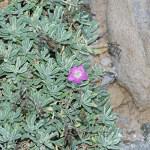 The plants growing in areas strongly influenced by the sea, are those that can withstand salinity.
The plants growing in areas strongly influenced by the sea, are those that can withstand salinity.
Tamarisk (Tamarix gallica) is such a species, a small tree which can reach 7 m. in height. On practically all the beaches of the island one comes across the shrubby orache (Atriplex halimus), a very characteristic bush with blue-green leaves, as well as the common rock samphire (Crithmum maritimum). On some maritime rocks one may also come across some rare species such as Dianthus fruticosus and Convolvulus oleifolius.
Lily of Plathiena
The sea lily (Pancratium maritimum) deserves special mention. This pretty bulbous plant, which belongs to the Amaryllis family (Amaryllidaceae), used to be prevalent on coastal sandy areas where dune formations were present.
The Sea daffodil has many names, such as the Faliro Lily, Sand Lily and here in Milos, it is known as the Lily of Plathiena. Blossoming begins in late July and ends early September. The flowers are big, white and have a pleasing, exotic and very subtle lily scent. From late May until bloom, the bulb hides deeply buried in the sand. Its black, lightweight seeds can float in the sea for long periods. By autumn, the currents will carry them a long distance eventually placing them on another beach to continue germinating. In the past, it was present in all sandy beaches of Milos. Unfortunately the rapid growth on the coastal areas all around the Mediterranean and Greece throughout the last 50 years has altered the ecosystem of the Sea lily and today this species is threatened with extinction. So if you visit Milos in the summer, and are lucky enough to come across this ancient plant on one of the island’s beaches, admire it, smell it, take pictures of it, but please do not cut it, nor dig it up.
Hanging and climbing plants
Plants that grow on cliffs and hang downwards are characteristic of the island’s vegetation. These are the caper (Capparis spinosa) and the Ephedra foeminea. Another characteristic group consists of climbing plants such as the common smilax (Smilax aspera), the etruscan honeysuckle (Lonicera etrusca) and the virgin’s bower (Clematis cirrhosa).
Milos fauna
Mammals
The largest mammal is the brown hare (Lepus europaeus), in danger of becoming extinct, not on account of excessive hunting, but because of the rabbits released in nature by man, which are very competitive and threaten to oust the hare from its natural habitat.
Other species that have been recorded include the eastern hedgehog (Erinaceus concolor), different species of rats and mice, the black rat and house mice (Rattus rattus and Mus domesticus), a bat species, the pipistrelle (Pipistrellus sp.) and the pygmy horseshoe bat (Suncus etruscus).
The total absence of predatory mammals is also due to human activities.
Bird fauna
Milos is home to one of the most rare birds of prey, the Eleonora’s falcon (Falco eleonora) which lives and reproduces in the Aegean islands and on Crete. Other birds of prey that one can come across on the island of Milos are the Bonelli’s eagle (Hieraeetus fasciatus), in danger of becoming extinct on account of hunting, the buzzard (Buteo buteo) and the kestrel (Falco tinnunculus), a small falcon.
Finally, among nocturnal predatory birds we can list the little owl (Athene noctua) and the barn owl (Tyto alba).
Other birds living permanently on Milos are the chucar (Alectoris chukar), the rock dove (Columba livia), the collared dove (Streptopelia decaocto) and various small species of sparrow such as the crested lark (Galerida cristata), the skylark (Alauda arvensis), the wren (Troglodytes troglodytes), the house sparrow (Passer domesticus), the hooded crow (Corvus corone cornix) and the raven (Corvus corax).
Among sea–birds, the two most common ones are the herring gull (Larus cacchinans) and the shag (Phalacrocorax aristotelis).
Milos’ small wetlands are vital to migratory birds, as they are used by them as rest places in their long trip. Bird watching has recorded a host of both rare and more common species of birds that go through the island in spring and in autumn, while migrating.
Some of the species worth noting here are the very rare short-toed eagle (Circaetus gallicus), the golden eagle (Aquila chrysaetos), enough of the harriers (Circus) species, most of the Herons species (Ardeidae), the swans, the flamingo (Phoenicopterus ruber), many riparian species, and also woodcocks (Scolopax rusticola), doves, thrushes (Turdus), shrikes and many others.
Reptilian fauna
The reptilian fauna is both rich and rare. Fresh water springs in two areas of the island, the airport and Saint John Siderianos, are natural habitats for the Rana ridibunda frogs throughout the year. There are also two kinds of lizard, the balkan green lizard (Lacerta trilineata) and the Milos wall lizard (Podarcis milensis). The latter is endemic and can be found only on Milos, Kimolos, Polyegos, and Antimilos.
Milos is rich in snakes, another form of reptilian fauna that can be found the most known being the blunt-nosed viper (Macrovipera schweizeri), also endemic to the island. Other snakes are the cat snake (Telescopus fallax), the grass snake (Natrix natrix) and the leopard snake (Elaphe situla).

